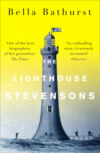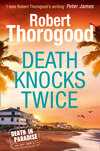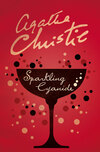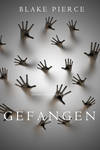Kitabı oku: «The Lighthouse Stevensons», sayfa 5
THREE Eddystone
Edinburgh in the early 1800s was an enticing place for a middle-class merchant with an enthusiasm for self-advancement. After the blow administered to its pride by the Act of Union in 1707, the city had descended into a long sulk. Union had allowed Scotland to keep a few trophies of her independence – her own law, a separate educational system, a bishop-stripped church – but the old, bitter quarrel with London did not cease overnight. Even Defoe, whose role as an English agent was to sell Union to the Scots, had found relations difficult. ‘Never two nations that had so much affinity in circumstances, have had such inveteracy and aversion to one another in their blood,’ he wrote disconsolately. By the 1750s, as trade improved and the benefits of Union began to be felt, the city emerged from its self-absorption. Gradually, it began to look to England and London as its example; there was much talk of Britishness and the first furtive attempts at English speech, English habits and English thinking. Soirees (pronounced ‘sorries’ in Edinburgh and ‘swurries’ in Glasgow) were held more frequently, tea was drunk and Scots began, as the philosopher David Hume put it, to be considered, ‘a very corrupt dialect’. Fifty years later, Lord Cockburn (rivalled only by Sir Walter Scott for his domination of the Edinburgh scene) wrote gloomily that ‘When I was a boy, no Englishman could have addressed the Edinburgh populace without making them stare, and probably laugh. We looked at an English boy at the High School as a ludicrous and incomprehensible monster. Now these monsters are so common that they are no monsters at all.’
The Scottish Enlightenment emerged slowly from this half-derelict background. The great upswell of enterprise and industrialisation produced an extraordinary group of men who came from lowly backgrounds to fill the sudden need for innovation. In the century after Union, Scotland produced an exceptional group of artists, philosophers and scientists, including Burns, Smollett, Adam Smith, Alan Ramsay, Robert, William and John Adam, Walter Scott, James Hogg, Henry Raeburn, James Watt, Thomas Telford and David Hume. The men who guided the Enlightenment were united by a growing belief in the force of reason. Man, they argued, was no longer at the will of his environment; he could explain it, control it and shape it where necessary. Life in all its aspects could be improved upon; there was to be no such thing as an old truth. Faith could be questioned, landscape could be shaped, economies could be transformed. In particular, they came to regard the ??dy of mankind and the improvement of human nature itself as an essential part of enlightened life. They put aside the ??oning faiths of the pre-Union years and replaced them with a new philosophy, brisk and scientific. Scotland was no longer forcibly strapped to her past; it was possible to improve on history.
The intellectual adventurousness of the age was matched by a rush of enterprise. Agriculture and business flourished, new industries boomed and old practices vanished. The expansive mood was a blessing for entrepreneurs. Many of the richer merchants took to the ultra-fashionable new hobby of agricultural improvement, turning their acreages into models of economic discipline and landscaped tameness. Some went north to enlighten the misguided Highlanders. They planted trees, started enterprises and encouraged the use of new machinery. Alongside the new flocks of scientists and social engineers, the inventors throve. Engineering, previously considered a profession for tradesmen and foreigners, began to develop a status and confidence of its own. Some of the mill-wrights, masons and clerks who moved into the profession were shrewd enough to see the urgent need for new design, and rose to meet the challenge. Down in England, Smeaton was building lighthouses, Arkwright was showing off the benefits of water frames and Trevithick was designing prototype locomotives. In Glasgow, James Watt moved on from making musical instruments to experimenting with steam engines. In the north, Thomas Telford had begun threading roads around the coasts, while John Rennie was building bridges. By the mid-nineteenth century, Prince Albert was heard to note approvingly that ‘If we want any work done of an unusual character, and send for an architect, he hesitates, debates, trifles: we send for an engineer, and he does it.’ The heroes of post-Enlightenment Britain also encouraged the view that hard work, imagination and enterprise were all that a man needed to rise from the lowest level of society to the highest. Titles did not matter quite as much as ability. It was small wonder that Thomas Smith and, in his turn, Robert Stevenson felt themselves in familiar company.
Edinburgh’s architects, meanwhile, were building the New Town. The city that Defoe had visited in the 1720s was, by even the most optimistic standards, disgusting. Overcrowding, disease and squalor had given Auld Reekie its name and reputation; Glasgow, by comparison, was the finest, sweetest city in all the Empire. The lack of housing and the density of people meant that people took shelter where they could find it. Each of the tottering Old Town tenements housed a cross-section of every class and occupation from Lords to barrow boys. The Proposals for Carrying on Certain Public Works in the City of Edinburgh were drawn up by the Convention of Royal Burghs in 1752 and construction work began soon after. The Nor’ Loch below the Mound was drained and landscaped, the Lang Dykes became Princes Street and the slow geometry of the Georgian New Town began to unfold. Work had not been finished before the middle classes bolted from their squalid quarterings near the Castle to the new city.
The division between the old town and the new was the most eloquent illustration of the divisions in Edinburgh’s character. It had always seemed the most strong-minded of all Scots cities, but under the surface the contradictions became more obvious. During the eighteenth and early nineteenth centuries, it managed to sustain several wildly contradictory faiths: anti-Englishness and fervent Britishness; improvement and nostalgia; depression and vivacity. It never did, as it sometimes liked to believe, exist in cosmopolitan isolation. During this period it feared the invasion of the French, the Papists or the Wild Highlanders even more than it feared the loss of its identity to England. The terror of anarchy produced a contrariness in the city’s character, at once devout and cruel, reasoned and unreasonable.
Both the Smiths and the Stevensons had come to Edinburgh from elsewhere, but ended up adopting the habits and thoughts of the city as their own. By the turn of the century, they had become perfect exemplars of New Town life. Baxter’s Place had become a useful port of call for clients who had heard of Thomas and Robert’s growing reputation for ironmongery, lamp-making and general engineering projects. Within the house itself, life became segregated; while the men discussed work, the women gossiped over acquaintances and fussed over the children. The link between the two families had been reinforced by Robert’s wedding in 1797 to Thomas’s eldest daughter, Jean (one of the two surviving children born to his first wife). ‘The marriage of a man of 27 and a girl of 20 who have lived for twelve years as brother and sister, is difficult to conceive,’ Louis later commented drily. But Thomas much approved of the union, regarding it as another healthy symptom of the closeness of both families. Outsiders, however, regarded Thomas’s status as Robert’s stepfather, boss, father-in-law and mentor as dangerously intimate.
Something of the strangeness of this arrangement comes over in Robert’s letters, which mention in the same breath his half sister Betsey, aged six (Thomas’s daughter by his marriage to Robert’s mother) and his wife, Jean, Thomas’s daughter from his previous marriage. In a letter of 1807 sent to Robert while he was aboard the lighthouse yacht, Thomas signs himself ‘your ever affectionate father’, and mentions that ‘we are all well: Your wife, your mother and myself dined and drunk tea with Mr Gray yesterday.’ In letters and diaries, Robert would refer to Mary Anne, Thomas’s daughter from his second marriage, as ‘my dear sister’, and later regarded the offspring of the Smith children not as unrelated acquaintances, but as cousins. As Thomas grew older, Robert slipped naturally into position as head of the family, presiding over both Thomas’s children and, increasingly, his own. Robert’s marriage was certainly a curious match, even when judged by the habits of the day. But the two families had been living together for over a decade, Robert had learned his trade, his morality and his habits from the Smiths, and, in the enclosed New Town world of the 1790s, such unions were not unusual. Besides, Robert’s mother seems to have done a little engineering herself, and was no doubt delighted at the wedding.
In common with the rest of her family, Jean Smith possessed a forceful character. As befitting her respectable position, she was a refined and rather feminine creature, who had for the most part led a life of bourgeois niceties. In her way, however, she was as single-minded as her new husband. She ran a well-disciplined household, founded on firm government and Christian virtues, but at the same time remained interested in high society. Louis, it seems, found Jean’s charms difficult to understand. ‘My grandmother,’ he wrote, ‘remained to the end devout and unambitious, occupied with her Bible, her children and her house; easily shocked and associating largely with a clique of godly parasites’. As someone who had struggled with religion for much of his life, he found Jean Stevenson’s sheeplike devotion exasperating. If she was asked to employ a cook, the cook would be taken because she was pious, not skilful. The midwife would be hired on her knowledge of the Catechism rather than her gift for obstetrics. Louis was hard pressed to understand what it was about her that Robert had found so compelling and wondered slyly about ‘the sense of disproportion between the warmth of the adoration felt and the nature of the woman’. He searched a little further, and came up with only the faintest of praise. ‘She diligently read and marked her Bible; she was a tender nurse; she had a sense of humour under strong control.’ Robert might have been allowed to play the adventurer away from home but once returned to Baxter’s Place he deferred to his wife. He did not apply the same standards to marriage as he did to work; women, he believed, were a softer, more obscure species than men, and could not be dealt with in the same blunt manner as men. In belief and habit Robert was an old-fashioned man and Jean an old-fashioned wife. Despite this, or perhaps because of it, they had an equitable marriage. Robert remained to the end devotedly loyal and prepared to respect Jean’s judgement in almost all family matters. The only household business which he took an interest in was the education of his children; the rest was her responsibility.
Jean was also marked by the deaths of her children. Between 1801 and 1818, nine children were born, of whom five survived. ‘Never,’ wrote Louis with the blithe callousness of a born survivor, ‘was there such a massacre of the innocents; teething and chin-cough and scarlet fever and small-pox ran the round; and little Lillies, and Smiths, and Stevensons fell like moths about a candle.’ By 1818, the carnage had ended and the Stevensons were left with Jane, Alan, Bob, David and Thomas. But Jean reacted to the loss of the four souls by lavishing a morbid attention on the remaining children. Alan, in particular, worried her; he was a pale, frail child whose childhood was often interrupted by illness. Jean pestered him endlessly to wrap up and to keep taking the poultices, and Alan treated her fussings with a mixture of embarrassment and dismissive gratitude. Jean’s melancholic habits may be one reason why the five surviving Stevenson children became so superstitious about illness. All of them grew up obsessively attentive to their own wellbeing; Thomas, in particular, became a full-time hypochondriac. The Stevenson domestic life, and the ritual outbreaks of Edinburgh epidemics – cholera, tuberculosis and smallpox were all, at various times, rife – made a potent mixture. The contrast between the hardiness of their lighthouse work and the dainty medical paranoia at Baxter’s Place was to become even more emphatic in later years.
Several consolatory letters from his staff reveal the extent that the deaths of his children preyed on Robert’s mind at the time. His letters home became more and more solicitous, enquiring often about Jean’s health and the state of the remaining children. He hoped Jean was getting out enough, that she was taking plenty of exercise, that she saw her friends often, that she went regularly to market. In 1816, after yet another death, he advised her not to become too depressed. ‘If that kind of sympathy and pleasing melancholy, which is familiar to us under distress, be much indulged, it becomes habitual, and takes such a hold of the mind as to absorb all the other affections, and unfit us for the duties and proper enjoyments of life. Resignation sinks into a kind of peevish discontent.’ His concern for her was also transmitted to the children. They were to attend to their studies, get plenty of fresh air and not to dwell on morbid thoughts. ‘Let them,’ he wrote to Jean, ‘have strawberries on Saturdays.’ He also chivvied the children about their education. Jane, his eldest child, was instructed to ‘read Wotherspoon, or some other suitable and instructive book’, Bob to ‘learn his Latin lessons daily; he may however, read English in company’. While in Fraserburgh, he suggested that ‘it will be a good exercise in geography for the young folks to trace my course’. Above all, as he wrote in one communal letter from London, ‘the way to get money is, become clever men and men of education by being good scholars.’
The Smiths also remained close. Jean’s sister Mary Anne (always known as Mary) remained at Baxter’s Place long after Robert had taken over from Thomas as patriarch. She played an active part in bringing up Robert’s children and, since she remained unmarried, became almost a second mother to them. James, meanwhile, moved away from Baxter’s Place to found his own ironmongery business and establish a family. Mary and Robert got on well, though in later years Robert tended to take the tone of overbearing elder brother with her, and became peevish about the burden she placed on the household expenses.
Poor Mary, amiable and sheltered, spent much of her time shuttling between Robert and Jean, caught in the unenviable trap of Victorian spinsterhood. Later, she was to try taking a position as a governess in London; her letters from Islington show a bewildered innocence about life beyond Edinburgh and a terror of displeasing her stepbrother. She wrote to Robert in 1818, informing him with wary cheerfulness that she had been sightseeing at the Missionary Museum for Heathen Idols and the Houses of Parliament where she ‘had the misfortune to trip over the Wool Sack’. She had also been on a trip to Hampstead, which had left her most disappointed at the dullness of English scenery. English prices were terrible; the boarding house she was staying in had already cost fifty guineas. ‘Should it be found necessary that I should do something for myself, I will prefer a situation in England for some time,’ she added disconsolately, evidently aware of Robert’s ferocious attitude to laggards. ‘Your letters contain both instruction and amusement…I shall also obey your injunctions to attend the Established Church.’
Thomas, meanwhile, was becoming exhausted by the annual circuits of Scotland. He spent more time concentrating on his lamp-making business, finding it less demanding than the lighthouse work. By 1800, having reached something of the status of a Grand Old Man, Thomas handed all the lighthouse business on to Robert and retired to a respectable dotage. Robert still referred to him on details, and kept up regular reports of his progress while away, but by 1808 had separated both his lighthouse and private business from Thomas’s old company. The two remained close in business and private, and Robert found it reassuring to have his stepfather’s guidance for his schemes. But by 1800, Robert had already outstripped Thomas’s experience, and was becoming a recognised expert in his own right. By 1789, the NLB had been given a free hand to build lights when and where they felt they were necessary, and between 1793 and 1806, five more were built at points around the Scottish coast. The NLB scarcely had to bother looking for a successor to Thomas; Robert was appointed as engineer to the Board as naturally as if he had been born to the role.
The outdoor life of a lighthouse pioneer suited Robert wonderfully. Thomas had put up with the voyages, obstacles and disputes; Robert actually enjoyed them. He, like Thomas, lived a sober life in Edinburgh, but once released from the city, his character expanded. His job, after all, was an unusual one. As his grandson Louis later noted,
The seas into which his labours carried the new engineer were still scarce charted, the coasts still dark; his way on shore was often far beyond the convenience of any road; the isles in which he must sojourn were still partly savage. He must toss much in boats; he must often adventure on horseback by the dubious bridletrack through unfrequented wildernesses; he must sometimes plant his lighthouse in the very camp of wreckers; and he was continually enforced to the vicissitudes of out-door life. The joy of my grandfather in this career was strong as the love of woman. It lasted him through youth and manhood, it burned strong in age, and at the approach of death his last yearning was to renew these loved experiences.
Robert spent the next few years supervising the lights and correcting any existing problems. Like Thomas, he was meticulous, but he brought a blunter approach to the job than his predecessor. Perhaps his greatest asset was the force of personality necessary to carry a reluctant staff along with him. As it became evident that the lighthouse work was swallowing more and more of his time, he began training assistants to help. In the early days he still did the bulk of the work entirely alone, but as time went on, he began to build relationships with a select group of workmen whom he felt he could trust with many of the mundane details. The assistants, in turn, understood Robert to be an employer who expected backbreaking work but offered in return loyalty and enlightened working practices. But it was not merely a decent wage that kept many of his assistants with him for the whole of their working lives. Robert had charisma; the charisma of great purpose. He was not charming, and would have considered charm to be an insult, but he did have the ability to lead others through sheer force of personality. He persuaded not through words but through deeds and by his own example.
At times, Robert’s intensity could be daunting. In many cases, he silenced suspicion or opposition by simply ignoring all argument on the subject. Anyone who complained that lighthouse work was too tough or too dangerous had only to watch Robert sailing through gales or striding across wave-swept reefs to feel themselves fainthearts in comparison. Anything his workmen could do, Robert himself would prove he could do better. For all his high-handed habits, Robert did not regard himself as a grandee but as an equal partner to his men. His flaw was to expect exactly the same of others as he expected of himself. As Louis later put it, ‘what he felt himself, he continued to attribute to all around him.’ Robert was a worker and an impassioned preacher for the benefits of self-discipline, and those who fell below his particular standards astonished him. When others let him down, as they often did, Robert reacted with bafflement; if he was fair with them, he reasoned, why were they not equally straight with him? Though a great leader, Robert was too often a hopeless judge of human nature. He knew himself, and considered that knowledge sufficient.
For much of the time, Robert was worrying about theory as well as practice: would a revolving light suit one place better than another; were floating lights a feasible option; could the cost and difficulty of transporting oil be offset with other savings? Robert set about refining Thomas’s original designs for the reflectors, applying a silver coating to the old copper circles, and dispensing with the beautiful but ineffective silvered-mirror designs. His refinements helped to increase the strength of the light, and, when several reflectors were placed one above another in the light room, gave out a steadier, better light than Thomas’s weak beams. Some time later Robert was also flattered to discover that the reputation of his new silvered reflectors had drifted far beyond Scotland. The Covent Garden Theatre in London ordered one and spent some months experimenting with it as a potential spotlight. John Sam, the theatre carpenter, eventually returned it to Robert, mentioning regretfully that ‘It is an excellent reflector but it collects the light too much in one spot for our use.’ Theatre’s loss was the lighthouse’s gain, and Robert was delighted with this unintended endorsement of his designs.
He then began concentrating on the oil lamps themselves. Twenty years previously, a Swiss scientist named Ami Argand had begun experimenting with the idea of an oil lamp which could give a purer, brighter light than the smoggy lamps then in use. As Argand’s brother later told the tale, he and Argand were eating supper one night when he broke the neck of a glass flask. Reaching over to pick it up, he accidentally moved it over the flame of the oil lamp. ‘Immediately it rose with brilliancy,’ he wrote. ‘My brother started from his seat in ecstasy, rushed upon me with a transport of joy and embraced me with rapture.’ With that broken flask – later developed into an elegant glass chimney – Argand had discovered a method of protecting and clarifying the flame from an oil lamp. Once he had added a circular wick, and a lever to raise or lower it as necessary, his invention became popular throughout Europe and beyond.
Robert, realising how useful the invention was for his purposes, tested a prototype at Inchkeith and then brought in Argand lamps for all the Scottish lights. It was, he discovered, a sharper and more reliable light than Thomas’s original lamps. Depending on the oil used, the strength of the beam could also be increased or decreased. At various stages, Robert experimented with olive and rapeseed (or colza) oil, and tried to find alternatives to the smoggy household oil then in use. He also read of a South American discovery that sheep’s tails produced an unusually brilliant light. Unfortunately, the difficulties involved in clipping the tails off thousands of reluctant sheep were found to be insuperable. Whale oil seemed the best option for Robert’s purposes; it was expensive but effective, burned cleanly and gave out the brightest light. Sperm whales, already heavily hunted in both northern and American waters, therefore provided the Scottish lighthouses with their fire for another fifty years.
With the increase in lighthouses came the need to differentiate between lights. In the Pentland Firth, for instance, where several lights would eventually be visible at one time, it was necessary to distinguish each with an individual pattern of flashes. At the time, all lights were fixed, sending out a steady beam in one direction throughout the night. Robert, pondering how best to vary the lights, began slowly to devise methods of rotating the reflectors on a central axis so they appeared instead to flash. His first few experiments were troublesome, since it seemed almost impossible to devise a smoothly balanced mechanism for the cumbersome ranks of lamps. In practice, it often required one of the keepers to spend the night pushing the light round in circles. Nevertheless, by 1806, the new lighthouse at Start Point included a clockwork mechanism ‘exhibiting a brilliant light once in every minute, and becoming gradually less luminous’.
Lenses, of course, still did not exist for lighthouses, though some experiments had been undertaken in England and France with pieces of glass placed behind the light. All lighthouse technology developed in painstaking isolation. Those researchers who were experimenting with new engineering or optical techniques were spread far away around the laboratories of Europe, and there was as yet no way of communicating their findings efficiently. Even by 1819, it was calculated that, out of 254 lighthouses then in use throughout Europe, 5 were still lit by candles, 30 by wood or coal fires, 2 with coal gas, 157 with common oil lamps and 60 with Argand lamps. Many countries were not aware of developments or inventions elsewhere, and, though the different national lighthouse services often worked well together, most stuck resolutely to their own practices. Indeed, for a while the NLB had rather better relationships with the French lighthouse commissioners than it did with the English.
In practice this meant that Robert often worked blind, unaware of the efforts of his fellow engineers and unable to do more than feel his way through the darkness. In time, Robert established links with many of the most important British and European inventors and an atmosphere of mutual helpfulness, jolted by the occasional hiccup of professional jealousy, gradually developed. For the moment though, Robert was more preoccupied with refining his existing designs. He spent his winter nights making elegant architectural drawings, detailing the dimensions of each lantern, and polishing his reflectors to perfection.
Robert relished the journeys and fretted at the endless delays spent in harbours or waiting for supplies. Behind the occasional non-committal statement in his diary or the NLB Minutes that he ‘found the light in good order’, lay hours of patient pedantry. His written evidence reveals as much by its omissions as by the endless records of missions accomplished. On paper, Robert was not an eloquent man. His diaries and minutes tell a gruff history only occasionally illuminated by flashes of insight. His grammar, as Louis later noted with some exasperation, was often hopelessly tangled and his occasional attempts at flattery ill-judged. As he wrote offhandedly to a colleague in 1802, ‘In submitting this address to you, I was otherwise impressed than with the view of laying something before you that might afford pleasure from style and composition. Those are no happy talents of mine, for my avocations in life intirely preclude me from such advantages.’ His son Alan was later to find Robert’s habit of referring to himself in official correspondence as ‘the Reporter’ or ‘the Writer’ mystifying. But Robert, unlike his son, remained conscious throughout his life of the gaps in his education. He spent twelve years chasing his degree, and was finally prevented by his lack of Greek or Latin. His solution was to turn their absence into an advantage, and to be as plainspoken as possible in all his dealings. Sometimes, indeed, his brusqueness verged on bullying. In all his work there was a sense of barely stifled urgency; he wanted life to be as fast and as efficient as he was, and he grew almost frantic when transport, communication or human fallibility disappointed him.
But along with his desperation for haste Robert had extraordinary patience for detail. Most engineers, planning out a bridge or a road or a light, would have given only the most necessary sketchings. Robert gave ornaments or cornicings the same attention as he did load-bearing walls. He didn’t need to bother; he just wanted to. Likewise, he remained meticulous about the regular blizzards of paperwork that the lighthouse service produced. He would often return late at night from a day’s hard journeying and start on a further mileage of instructions. At one stage, he calculated, he had written and received over 3,000 letters in a single year, in addition to preparing the rough and fair copies of reports, estimates, invoices and private correspondence. For a while, he also kept up a separate journal, a memorandum book and a diary. When his youngest son, Thomas, visited England in 1844, Robert handed him a crowded little notebook containing jottings on almost every harbour in Britain. Again, Robert had not written it from necessity, but from an instinctive thoroughness in all his dealings, however apparently irrelevant.
As chief engineer, Robert was also expected to contend with less predictable difficulties. One of the major hazards of any journey around the Scottish coast at the time were the press gangs. The boom in trade and war and the premium it put on able seamen meant that shipowners often had to find more inspired methods of attracting a crew. At the end of long voyages, ships would frequently find themselves surrounded and boarded by gangs intent on kidnapping or coercing the sailors into work on other boats. Sometimes they acted for themselves; often they acted for the State. The navy, with its voracious hunger for manpower, had become the press gangs’ best customers by the time of the outbreak of the Napoleonic Wars. The pressmen used every method, legal and illegal, at their disposal to find sailors, from searching the workhouses to plundering the country’s prisons. Most gangs relied on a steady supply of informers, and were prepared to consider almost anyone, including deserters, criminals, children and the disabled. An Act of 1704 declared that ‘Idle Persons, Rogues, Vagabonds, and Sturdy Beggars…are hereby directed to be taken up, sent, conducted, and conveyed into Her Majesty’s service at sea.’ Later amendments to the Act provided for a suit of clothing to be given as a bribe to volunteers, though it made little difference, since the victims of impressment rarely went quietly.
Ücretsiz ön izlemeyi tamamladınız.










